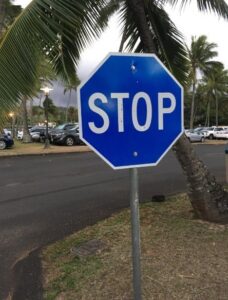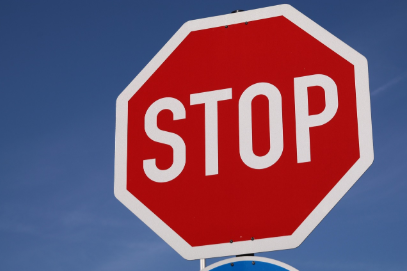
Blue stop signs, while uncommon, do exist but serve a different purpose than standard red stop signs. Unlike the red stop signs regulated by the U.S. Department of Transportation, blue stop signs are typically found on private property, such as in gated communities, parking lots, or private businesses, and are not legally required.
Historically, stop signs were originally yellow with black lettering until the 1950s, when red became the standard due to better visibility and its association with warnings.
Red remains the color for official stop signs, as it grabs attention and signals danger. In contrast, blue signs are often used for non-regulatory purposes, like guiding traffic or serving aesthetic goals.

If you encounter a blue stop sign, it’s generally best to treat it like a regular stop sign, especially in private areas, as ignoring it could lead to accidents or conflicts with local enforcement.
While not legally mandated, blue stop signs are placed for specific reasons, even though they don’t follow the official traffic control guidelines. Always prioritize safety and follow the sign’s instructions.